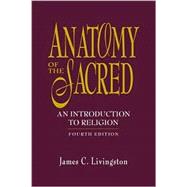Part Two examines universal forms of religious experience and expression and includes discussions of the sacred or holy; the nature of religious symbolism, myth, and doctrine; religious ritual; sacred scripture; as well s the social forms and dimensions of religion.
Part Three consists of a comparative analysis of six fundamental components that make up a religious world-view. These include deity or ultimate reality; cosmogony; the nature of the human problem, theodicy or the problem of evil; ethics or moral action; and the ways and goals of salvation or enlightenment. Examples are selected from a wide range of primal and archaic religions as well as from the great historical religious traditions of the present. An epilogue explores the challenges to religion introduced by modern pluralism and secularization.
Among this text's special features are:
- A highly readable comparative study of religious experience that incorporates the most up-to-date scholarship and translates it into terms accessible to undergraduates.
- Extensive citation of well-selected cross-cultural primary materials from primal, archaic, and modern religious traditions that illustrate the great variety of religious belief and practice.
- Each chapter includes an introductory overview, photographs, key words, review questions, suggestions for further reading, and a comprehensive glossary of terms and proper names.









